Did you know that you can actually plant field peas as a cover crop for your garden as a way to help improve your soil? That’s right – peas can be for more than just consuming!
Cover crops are essentially quick-growing crops that you plant in your garden or raised beds after you are done clearing out your crops. They are usually not intended for harvesting, but still help your garden immensely.
Cover crops are beneficial in so many different ways. From helping to deter pests and insects from harboring down in the soil during the cold winter months, to replenishing vital nutrients that have been depleted during the summer growing season, cover crops are your fall garden helpers!
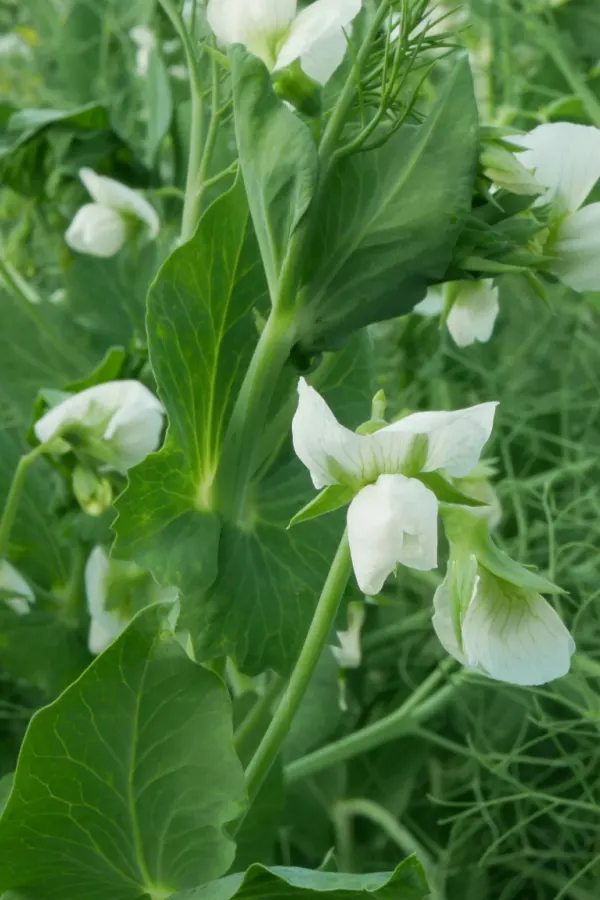
Different cover crops can help accomplish different tasks, so which one you choose will depend on your soil’s needs. They are all low-maintenance, help to stop weeds, and help recharge your soil with little to no work on your part.
But if you are in the need of a nitrogen-fixing, soil-improving, easy-to-manage crop, then field peas are the cover crop for you! Read on to find out exactly how field peas work as cover crops and why you might want to implement them into your garden this fall.
Benefits Of All Cover Crops In The Fall
As mentioned above, cover crops can do many different things for gardens. Here are some of the advantages of using cover crops:
First, they all help to stop weeds by giving their seeds no bare soil to land on and germinate. If you have just finished clearing out your garden in early fall, all of that bare soil is just asking for weed seeds to be blown in or dropped by wildlife.
By planting a cover crop, you are ensuring that nothing can grow in your soil besides what you want to grow there. In addition, all cover crops also help to stop erosion from occurring. As it rains or the wind blows hard, soil erosion is possible.
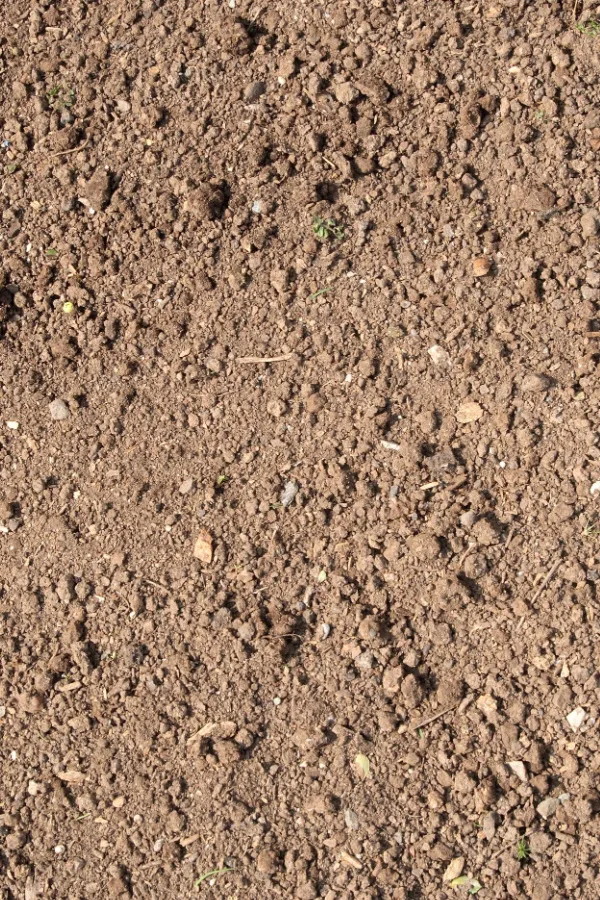
You don’t need to worry about soil loss if your soil is getting held together by the roots of cover crops. Not only do the roots hold the soil together, they also help to aerate the soil. This helps to loosen dense soils – all without you having to lift a hand.
Another great advantage is that when you are ready to plant your garden in the spring, you either mow down or till in the cover crop. As you do this, the cover crop is turned into organic matter that aids in your soil’s overall composition.
The Biggest Advantage
The biggest reason why you should plant cover crops is to help replenish the nutrients in your soil. It takes a lot of nutrients and energy for plants to grow and produce vegetables or flowers during the growing months.
If you don’t return those items to the soil in one form or another, your crops will start to suffer as the years go on. You can use cover crops to help re-energize that soil. They put those nutrients back to where you need them, just in time for spring to roll around.
For more information about using cover crops in general, check out “How To Grow A Fall Cover Crop.” You can even listen all about it in our podcast, “How To Plant A Cover Crop In Your Garden This Fall.”
Why Choose Field Peas?
With so many different types of cover crops, why would you want to choose field peas?
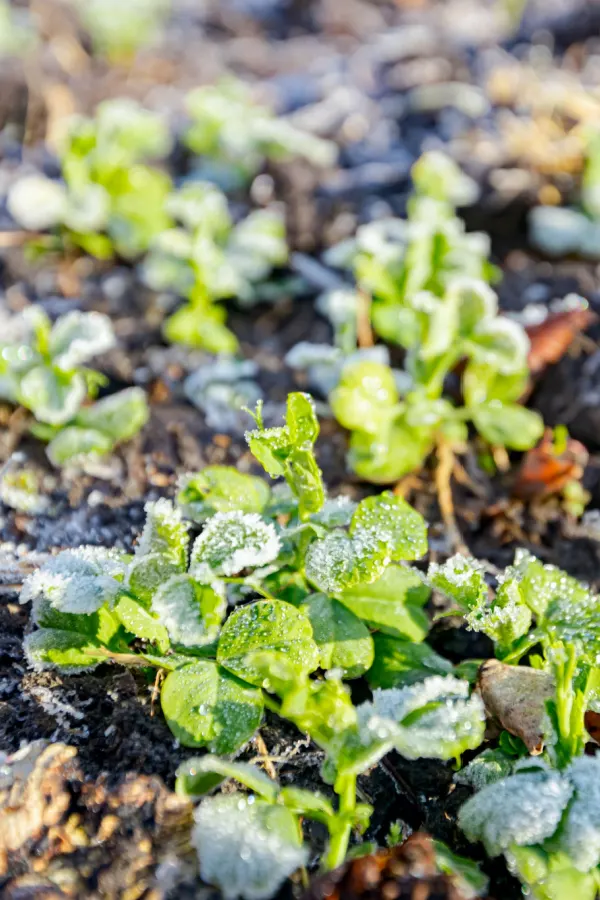
First off, field peas are pretty cold hardy, so they are perfect for growing in locations that have cold winters. In fact, they can handle temperatures that get well below freezing. Varieties like Austraian Field Peas or Dundale Peas are two excellent, cool-hardy varieties.
After you plant the seeds, they will germinate and start to grow until freezing temperatures hit. After that, the seeds will go dormant until the warmth of early spring arrives. This results in little to no work on your part to maintain.
In addition – and the main reason why field peas are a great option – is that they help to fix the nitrogen in the soil. Basically, field peas can absorb the nitrogen around them. That nitrogen then gets transferred into your soil when the peas are cut.
Nitrogen is vital for plants to have enough energy to grow and produce vegetables and fruit. When plants don’t have adequate nitrogen in the soil, they will struggle to grow properly and often end up stunted.
It is possible to use chemical fertilizers to add nitrogen back into your soil. However, the best and longest-lasting way to organically add nitrogen back into the soil is by using nitrogen-fixing plants like winter field peas.
Planting & Maintaining Field Peas As A Cover Crop
Now that you know why field peas are a good cover crop for your garden space, let’s talk about how to go about doing that. It’s an extremely easy process and one that will leave you wondering why you haven’t been using cover crops in the past.
Site Preparation – Plant Field Peas As A Cover Crop
Thankfully, field peas aren’t really particular about what type of soil they grow in. They do, however, require that the soil is well-draining. They also need a location that receives full sunlight (at least 6 hours each day).
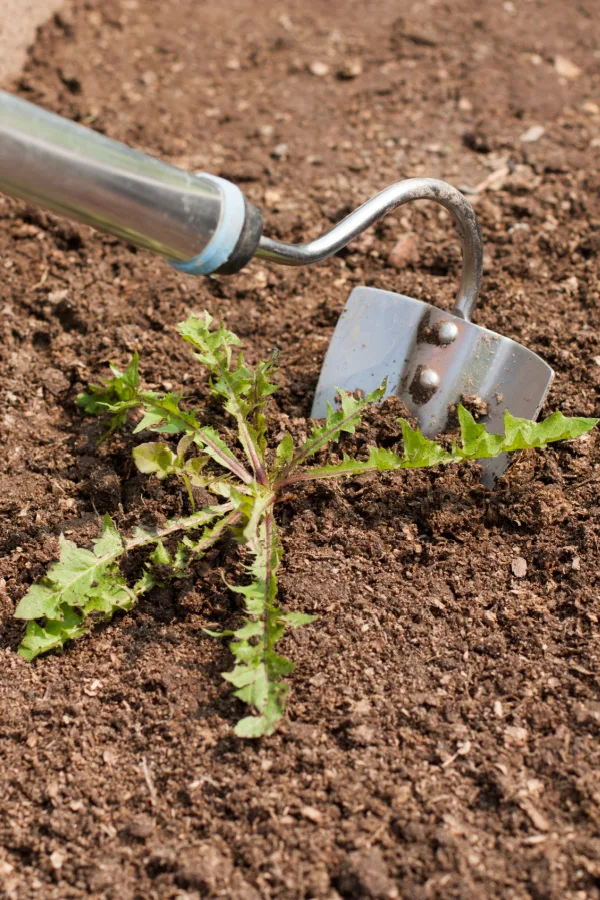
To prepare the planting area, remove all of the weeds and any remaining plant matter or mulch. If you still have a few plants growing and producing, you can always plant the field peas around those plants. Lightly rake up the top two inches of soil.
Aim for getting the field peas in the ground around 4 to 6 weeks before your First Expected Frost Date. This gives the crop enough time to germinate and become a bit established without growing too much.
Planting Field Peas
The easiest way to plant field peas is simply by broadcasting the seeds out by hand. You can choose to use a broadcast seed spreader for larger areas if you prefer.
The goal is not to make hundreds of tiny holes and space seeds out perfectly apart. The goal is just to space the seeds out as well as possible without taking too much time (or effort). You can either rake the seeds to set them in the dirt or apply a bit of soil over top. Water well to help set in the seeds.
Winter Care – Plant Field Peas As A Cover Crop
Keep the soil evenly moist until you start to see germination. The field pea seeds need to have adequate moisture in order to sprout properly. Be sure to avoid standing water though.
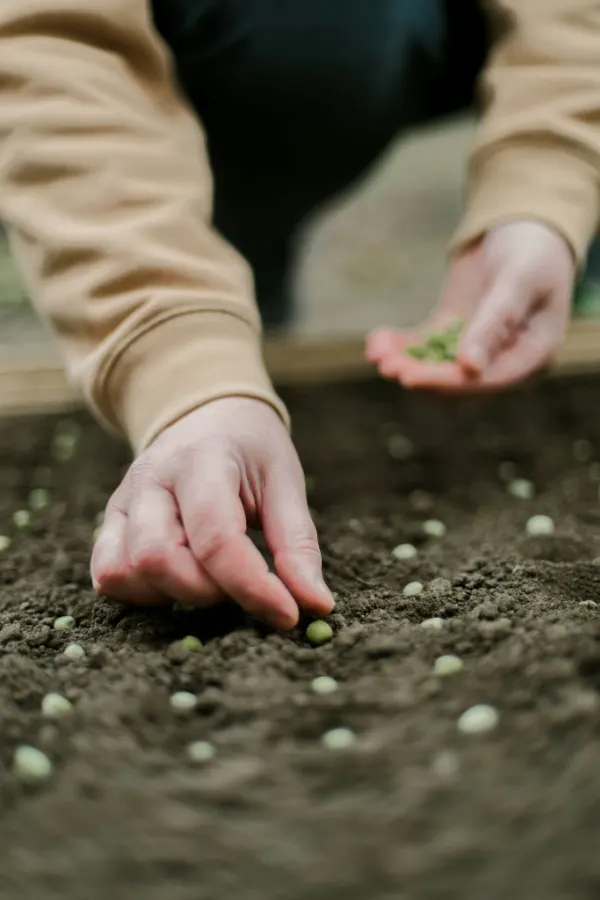
If soil temperatures are around 50º Fahrenheit or higher, then the seeds should sprout in around one to two weeks. If the soil temperatures are cooler, it may take as long as three to four weeks.
Once the cooler temps of winter hit, the field peas will go dormant. There is nothing more you need to do until spring rolls around. Don’t be alarmed if the growth is a bit sparse at this time. It will fill in substantially in early spring.
Early Spring Care – Plant Field Peas As A Cover Crop
As mentioned, when the soil starts to thaw out and warm up a bit in early spring, you will start to see good growth with the field peas. The plants will eventually start to flower. It is at this point that the plants have the maximum amount of nitrogen available.
Keep the field peas watered well while it is growing. Water the plants deeply but less often. This allows the plants’ roots to reach deep into the soil, which creates stronger root structures and overall healthier plants.
Killing Off The Field Peas
About three to four weeks before you need to plant your garden and after the field peas have reached full bloom, you need to kill off the cover crop. If you fail to do this vital step, your garden space will be inundated with growing pea pods as opposed to being ready for your next season’s vegetable crops.
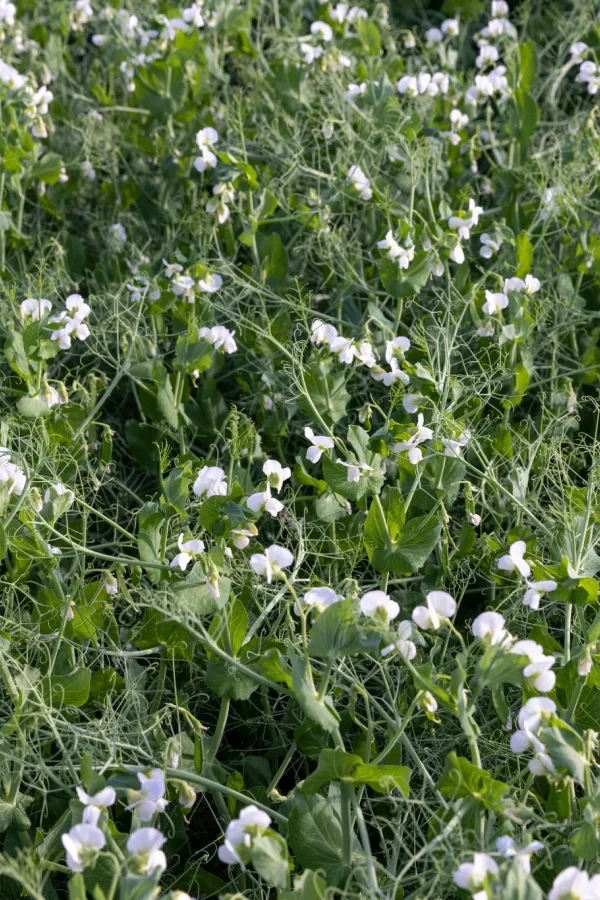
For a no-till method, simply mow down the field peas with a riding or push mower. You can even use trimmers or weed eaters for smaller areas or for raised beds. Leave the plant matter as it falls to be used as green mulch and to allow for maximum nutrient absorption.
Avoid pulling plants out as the roots left behind will break down and add nitrogen deep into your soil. They will also add lots of organic matter as the roots die. You can remove the leftover plant matter before planting and add it to your compost pile if you wish.
As an alternative, you can use a tiller to turn the peas back into the soil a month before planting. All of the plant material will break up and turn into organic matter and the nitrogen will be released.
Whichever method you use, your garden soil will now be re-energized, full of nitrogen, and ready to take on a brand new season of growing crops and vegetables!
Follow Our Facebook Page For Even More Great Tips! Simple Garden Life Facebook Page
Simple Garden Life is a website dedicated to keeping gardening fun, simple and enjoyable! We publish two new articles each week along with a new garden podcast episode every two weeks. This article may contain affiliate links.
